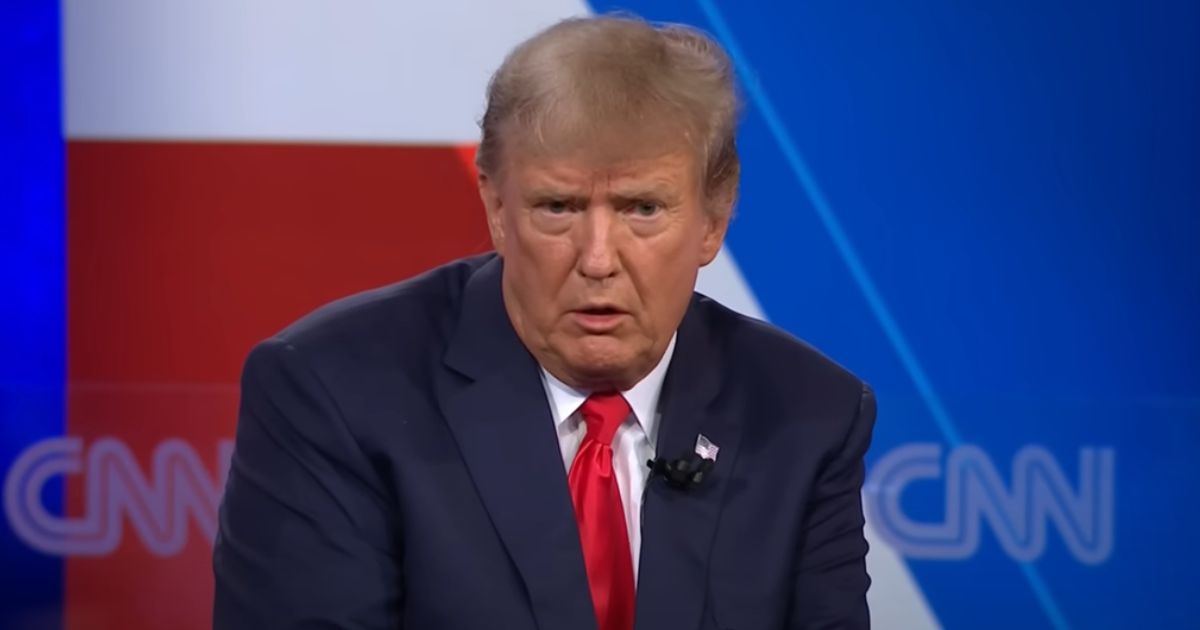Trump Outlines Economic Strategies to Tackle Inflation At RNC
In a pivotal moment at the Republican National Convention, former President Donald Trump unveiled an aggressive economic plan aimed at quashing the surging inflation rates that have burdened American households, and it included slashing taxes, imposing steep tariffs, and amplifying oil and gas production, promising an economic surge.
During his RNC speech in Milwaukee, Trump committed to ending the "inflation nightmare" through a series of fiscal and regulatory reforms, as Fox Business reports.
Trump's criticism of the current economic situation under President Joe Biden reached its peak during his speech on July 18, attacking what he described as the highest inflation rates experienced under any recent administration.
He pointed out that although inflation rates have receded from their peak, they remain stubbornly above the Federal Reserve’s ideal target of 2%.
The toll of rising consumer prices is evident across the country, as families face escalating costs—from groceries and rent to healthcare. Trump's plan aims to address these challenges directly by revising the tax code and reallocating energy policies.
Innovative Proposals For Tax Reform
Trump vows to implement “massive tax cuts” if re-elected, repealing the tax on service workers' tips and extending the benefits of the 2017 Tax Cuts and Jobs Act.
By eliminating taxes on tips, Trump argues that service workers can take home more of their earnings, thereby mitigating some of the adverse effects of inflation.
These tax proposals are part of a broader campaign to relieve citizens and stimulate the economy, pointing towards a potential shift in financial burdens from middle-class Americans to other economic structures.
Oil, Gas, and Tariffs: A Triple Strategy
Central to Trump’s strategy is the resumption and expansion of U.S. oil and gas production, which he asserts will drastically reduce energy expenses, consequently lowering prices for transport, manufacturing, and daily goods.
Echoing a slogan from his previous campaigns, “Drill, baby, drill,” Trump forecasts a large-scale decline in prices should these policies be implemented.
Moreover, Trump’s plans extend to reshaping the U.S. tariff system, advocating a minimum of 10% tariff on all imports with significantly higher rates on specific goods from China and all foreign-made cars. These measures are intended to encourage domestic production and, according to Trump, protect American jobs.
Financial Impact of Tariff Increase
However, the tariff proposal has not been met without skepticism. Analyses from economic institutions like the Peterson Institute for International Economics suggest that the increased tariffs could lead to additional annual costs of around $1,700 for the average middle-income American family, highlighting potential challenges within Trump’s plan.
Addressing these concerns, Trump reiterated that the broader economic benefits of these policies would outweigh the initial costs, pointing to long-term growth and stability as paramount goals.
Trump’s emphatic speech also brought to light his vision for an American economy with burgeoning job opportunities and thriving middle-class prosperity. He boldly stated, “Under my plan, incomes will skyrocket, inflation will completely vanish, and jobs will come roaring back,” appealing to voters with promises of unprecedented economic recovery.
The Resonance of Energy Costs Reduction
“Lower energy costs reduce the cost of transportation, manufacturing, and all household goods,” Trump explained, reinforcing his point that boosting U.S. energy production is crucial in battling inflation. His emphasis on this relationship is intended to resonate with voters suffering from high current prices.
With the November election on the horizon, Trump’s promises and policies are poised to stir significant political debate, especially among populations hardest hit by inflation. His strategy is clear: utilize a combination of fiscal conservatism and aggressive trade and energy policies to restore economic stability and growth.
As the campaign season progresses, it remains to be seen how these proposed measures will impact voter sentiment and electoral dynamics, especially given the critical voices warning of possible negative repercussions from increased tariffs and intensified energy production.
In conclusion, Former President Donald Trump during his RNC keynote speech outlined a multifaceted approach aimed at curbing inflation.
His promises of tax cuts, increased tariffs, and enhanced oil and gas drilling form the crux of his plan to bolster the economy and alleviate financial strains for American households.





